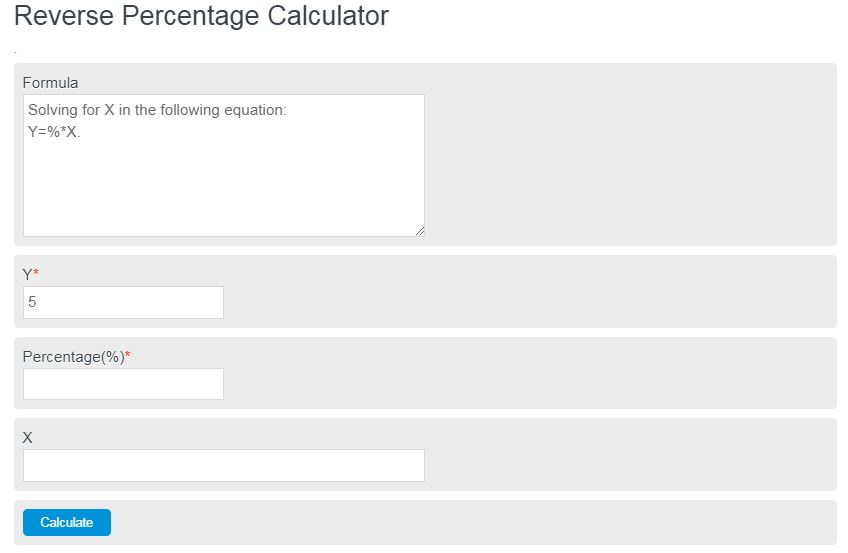Enter a number and the percentage of a number, and this reverse percentage calculator will determine the original number. For example, 25% of X is 5. Solving for X we find the answer to be 4.
- Percent Yield Calculator
- Percent Error Calculator
- Average of Percentages Calculator
- Percentage Difference Calculator
Reverse Percentage Formula
Percentages are numbers that are expressed as fractions. They are denoted by the symbol %. These numbers have no units and are there for dimensionless. For example, the percentage of 25% is equal to a fraction of 1/4 and can be written as .25.
To calculate a reverse percentage, divide the value by the decimal form of the percentage value.
How to calculate reverse percentages?
Below are two different examples of how to calculate numbers from percentages, otherwise known as a reverse percentage.
- Let’s assume we have a number of 100. We find that this number is 25% of some original numbers. To determine the original number, we simply need to multiply 100 by the inverse of the equal fraction to 25%. So, 25%= 1/4, and the inverse of 1/4 = 4. Therefore the original number can be calculated as 100*4=400.
- In this example, we are going to use a more abstract number and percentage. Say we have a number that is some percent of another number. We will assume our number is 121 and that is 32% of another number X. To calculate x we must use the same process as the previous example. 121 * 100/32 (the inverse of .32). = 378.125.
FAQ
A reverse percentage is a method of determining an original number from the percentage and new number.
